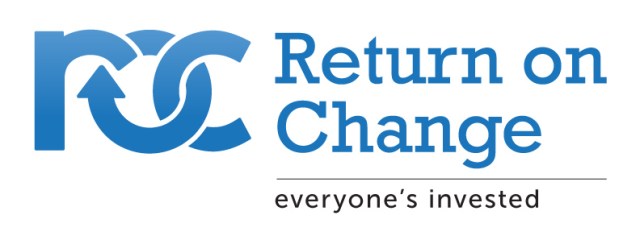![]() Editor's note: This guest post was written by Richard Price, founder and CEO of Academia.edu — a site that serves as a platform for academics to share their research papers and to interact with each other.
Editor's note: This guest post was written by Richard Price, founder and CEO of Academia.edu — a site that serves as a platform for academics to share their research papers and to interact with each other.
Almost every technological and medical innovation in the world has its roots in a scientific paper. Science drives much of the world's innovation. The faster science moves, the faster the world moves.
Progress in science right now is being held back by two key inefficiencies:
- The time-lag problem: there is a time-lag of, on average, 12 months between finishing a paper, and it being published.
- The single mode of publication problem: scientists share their ideas only via one format, the scientific paper, and don't take advantage of the full range of media that the web makes possible.
The stakes are high. If these inefficiencies can be removed, science would accelerate tremendously. A faster science would lead to faster innovation in medicine and technology. Cancer could be cured 2-3 years sooner than it otherwise would be, which would save millions of lives.
The time-lag problem
The first major inefficiency is the time-lag problem for distributing scientific ideas. After you have written a scientific paper, it takes, on average, 12 months for the paper to be distributed to the global scientific community. During that time the paper is going through the peer review process, which takes an extremely long time.
If you read a paper, and have some thoughts about it, and write up a response, it is going to take 12 months for your response to be seen by the global scientific community.
Science is fundamentally a conversation between scientists around the world. Currently the intervals between iterations of that conversation are 12 months on average. This 12 month time-lag represents a huge amount of friction in the circulation of scientific ideas.
Imagine the slowdown on the web if every blog post, and every tweet, and every photo, was made available on the web 12 months after it was originally posted. Imagine if all the stories in your Facebook News Feed were 12 months old. People would be storming the steps of Congress, demanding change.
The time-lag in the distribution of scientific ideas is significantly holding back science. It's critical for global progress that we work to remove this inefficiency.
The single mode of publication problem
Historically, if a scientist wants to make a contribution to the scientific body of knowledge, it has to be in the form of a scientific paper.
Blogging hasn't taken off in science, because scientists don't get credit for writing blog posts. You often hear a scientist saying 'I'm not going to put these ideas in a blog post, because they are good enough for me to incorporate into a paper, which I'll publish in the next couple of years'. Everyone loses out because of that delay of a couple of years.
Most people who share information on the web have taken advantage of the rich media that the web provides. People share information in all kinds of forms: videos, status updates, blog posts, blog comments, data sets, interactive graphs, and other forms.
By contrast, if a scientist wants to share some information on a protein that they are working on, they have to write a paper with a set of two dimensional black and white images of that protein. The norms don't encourage the sharing of an interactive, full-color, 3 dimensional model of the protein, even if that would be a more suitable media format for the kind of knowledge that is being shared.
The future of science: instant distribution
Tim Berners-Lee invented the web in order to make it easier for him and his colleagues to share their research papers. The web has impacted science, but over the next few years, the web is going to entirely re-invent the way that scientists interact.
In 5-10 years' time, the way scientists will communicate will be unrecognizable from the way that they have been communicating for the last 400 years, when the first academic journal was founded.
The first change will be instant distribution for all scientific ideas. Some sites, such as arXiv, Academia.edu, Mendeley, and ResearchGate have brought instant distribution to certain sub-fields of science recently, and this trend is going to continue to all fields of science.
In a few years, scientists will look back and will struggle to believe that they used to exist in a world where it took 12 months to circulate a scientific idea around the world. Discussing the idea of 12 month distribution delays for ideas will produce the same confused look that it produces today, when one asks someone to conceive of 12 month distribution delays to tweets, blog posts, and general web content.
Instant distribution means bringing the time-lag for distributing a scientific paper around the world down to 1 day, or less. This speed-up will have a transformative effect on the rate of scientific progress in the world. Discoveries will be made much more quickly.
One of the reasons that technological progress in the 20th century was so much greater than growth in previous centuries is that there were so many powerful communication technologies invented in the 20th century that connected people around the globe: the telephone, the TV, the internet.
Bringing instant distribution to science will have a similarly transformative effect on scientific progress.
The future of science: rich media
Historically scientists have written their papers as native desktop content. They have saved their papers as PDFs, and uploaded the files to the web.
Over the next few years, scientific content will increasingly become native web content, and be written natively for the web. Scientific content will be created with the full interactivity, and richness, of the web in mind. Most papers are downloaded from the web, and printed out by scientists for reading. The content was written in such a way that it's fully readable in print-out form.
Most web content is inherently rich. No-one prints out their Twitter and Facebook News Feeds to read them, or blog posts. The idea of printing out content doesn't make sense for much of the web's content, such as YouTube videos, Facebook photos, interactive maps, and interactive graphs such as those on you find on Quantcast, or Yahoo Finance.
The hyperlink itself is a piece of interactivity built into web content. One reason you don't want to print out a Wikipedia article to read it is that the page is full of useful links, and you want to be adjacent to that interactivity when reading the article to take advantage of the full power of the article.
Historically, scientific papers have cited other papers, but those citations are not hyper-linked.
To citizens of the web, the idea of referring to some other page without linking to it seems an impossibly old-fashioned way of sharing content.
Imagine reading a blog, or a Facebook News Feed, where there were no links, and everything was plain text. Instead, there was a set of references at the end of the page, and those references told you were to find certain other pages on the web, but the references weren't themselves hyperlinked. A citation to a video would something like "YouTube.com, Comedy section, page 10, "Coke bottle exploding", video id = 34883". You would then have to go to YouTube and navigate to the right section to get the video that has that title.
This experience would indeed be a nightmare. The difference between that, and how the web currently is, is the difference between where scientific communication is right now, and where it will be in a few years, when scientists fully adopt the rich media of the web.
Scientists will share content in whatever format makes sense for the piece of content in question. They will share ideas in the form of data sets, videos, 3-d models, software programs, graphs, blog posts, status updates, and comments on all these rich media.
The ways that these content formats will connect with each other will be via the hyperlink, and not via the citation. The citation will look like an ancient concept in a few years.
Science is undergoing one of the most exciting changes in its history. It is in a transition period between a pre-web form of communication to a natively web form of communication. The full adoption of the web by scientists will transform science. Scientists will start to interact and communicate in wonderful new ways that will have an enormous effect on scientific progress.
The future of science: peer review
In a world of instant distribution, what happens to peer review? Will this be a world where junk gets published, and no-one will be able to tell whether a particular piece of content is good or bad?
I wrote a post on TechCrunch a few weeks ago called "The Future of Peer Review", arguing that the web has an instant distribution model, and has thrived. I argued that the web's main discovery engines for content on the web, namely search engines, and social networks, are at their heart, evolved peer review systems.
These web-scale peer review systems, search engines and social networks, already drive most discovery of scientific content.
The future of science: academic credit
Historically scientists have gained credit by publishing in prestigious journals. Hiring committees, and grant committees, historically have looked at the kinds of journals a scientist has managed to get published in as a measure of the quality of the scientist's work. In the last few years, such committees have also started to look at citation counts too.
As scientific content moves to become native web content, scientific content will increasingly be evaluated according to the kinds of metrics that reflect the success of a piece of content on the web.
Web metrics vary, and evolve. Some are internet-wide metrics, such as unique visitors, page views, time on site. Others are specific to certain verticals, or sites, such as Twitter follower counts, StackOverflow score, Facebook likes, and YouTube video views.
As these metrics are increasingly understood in the context of scientific content, scientists will increasingly share content that attracts this kind of credit.
If you can share a data-set, and collect credit for it, you will. If you can comment on a paper, and collect credit for it, you will do that too. If sharing a video of a process is more compelling than having black and white images of the process, videos will take off.
Directing Silicon Valley's resources towards accelerating science
Science is in the process of being re-built and transformed. It is going to be an exhilarating process. The positive impact to society will be significant.
The next wave of science is not being built by scientific publishers. It is being built by engineering-focused, Silicon Valley tech companies. It is being built by talented and visionary engineering and product teams.
Silicon Valley's formidable resources are starting to turn in the direction of science, having been focused for the past 2-3 years on areas like optimizing strawberry credit flows on FarmVille. Venture capital, entrepreneurial talent, and engineering talent is starting to flow into the space, and the future of science is starting to be built.
The ecosystem needs more resources. It needs more engineers, entrepreneurs, and venture capital. The prizes for success in transforming science go to everyone in the world. $1 trillion a year gets spent on R&D, of which $200 billion is spent in the academic sector, and $800 billion in the private sector. There are vast new companies waiting to be built here.
As the extraordinary Silicon Valley innovation engine increasingly directs itself at transforming science, you can expect to see acceleration on a scale that science has never seen. Science will change beyond recognition, and the positive impact on the rate of technology growth in the world will be enormous.
The time to act is now. If you are a VC, invest in science startups. If you are an entrepreneur, hunt for an idea in the space and run with it. If you are an engineer or designer, there is a list of startups trying to accelerate science here.






















































































